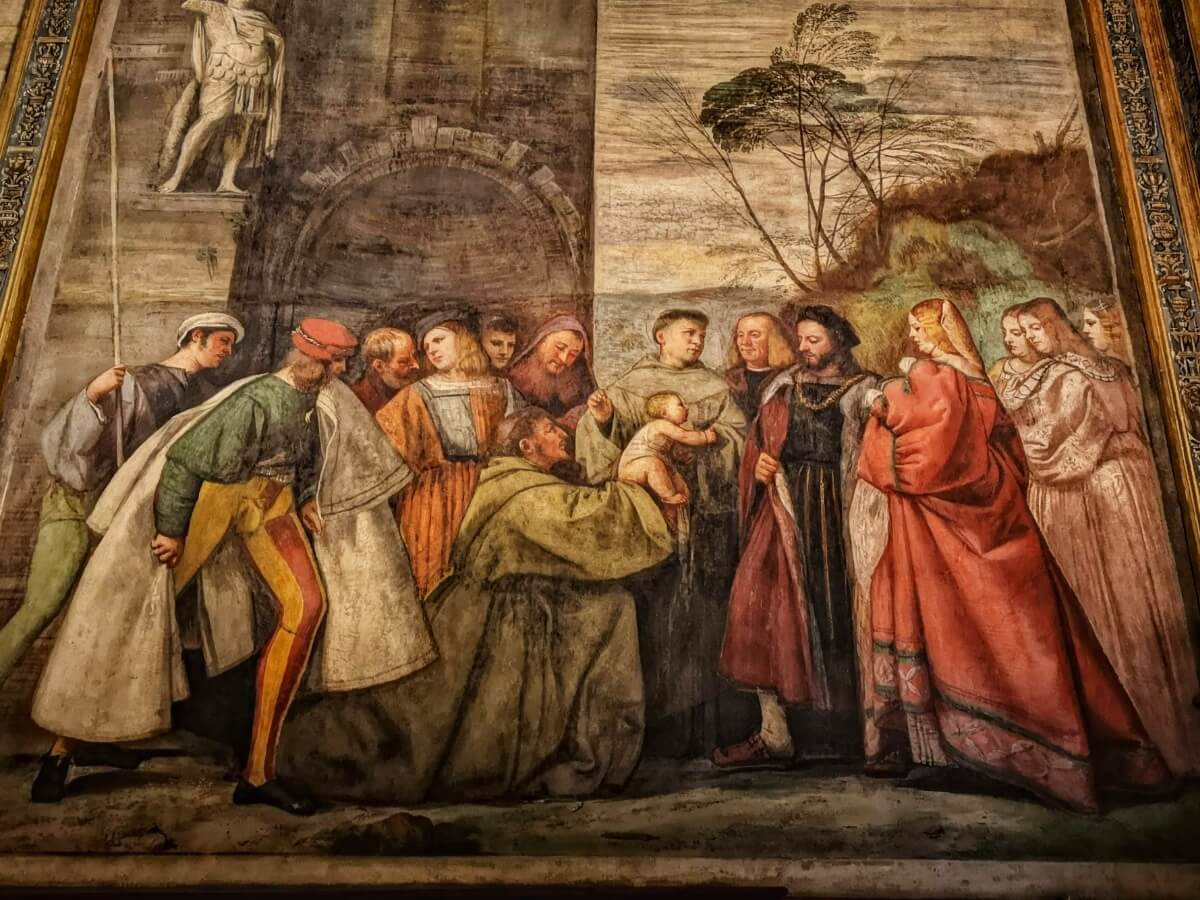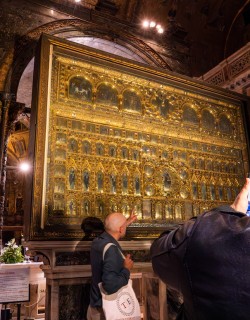Historic Padua is one of the most appealing cities in Italy. Chock-full of fabulous art, culture and history just half an hour from Venice, Padua doesn't feature on most tourist itineraries, and is never overrun with visitors. But what treasures await those who do make the trip from Venice! Home to one of the world’s oldest universities, the city boasts a vibrant social scene unfolding around magnificent medieval landmarks. From artistic masterpieces like Giotto’s Scrovegni Chapel, Giusto de’ Menabuoi’s mind-bending medieval cosmography in the Baptistery, Mantegna’s Ovetari chapel and Titian’s first masterpieces in the Scoletta, Padua is an art-lovers paradise. The tangled alleys of the historic centre meanwhile boast an 800-year old market, an array of characterful bars, restaurants and more. To celebrate the launch of our Best of Padua tour, this week on our blog we're counting down the places you need to see in this beautiful city!
For a sneak peak of what’s in store on a visit to the city, watch our episode of TE Destinations: Padua and discover why you need to take a trip to Padua.
The Basilica of Saint Anthony

Without question one of the world’s greatest churches, this imposing gothic edifice was constructed shortly after the death of the city’s patron saint in 1232 to provide an appropriate setting for his tomb. The church’s series of domes and spires are visible from across the city, and legions of pilgrims flock here every day to pay homage to the mendicant friar. The interior is a maze of chapels and corridors where masterpieces lie in wait around every corner: look out for Donatello’s refined reliefs on the high altar and the stunningly expressive sculptural narratives of Saint Anthony’s life by the Lombardi brothers in the Cappella del Santo, where the faithful jostle to supplicate at the saint’s final resting place.
Donatello’s Statue of Gattamelata

Before heading into the basilica di San Antonio, make sure to look upwards: towering over the piazza is Donatello’s equestrian monument to the Renaissance soldier-for-hire Erasmo da Narni, popularly known as Gattamelata, who spent his long career doing battle for the Republic of Venice. After his death in 1443 the state determined to honour Gattamelata with a monument, and turned to Italy’s most eminent contemporary sculptor to realise their vision: Donatello.
The grizzled warrior gazes off into the distance from his trusty steed, ready for battle. The first monumental bronze equestrian statue to be cast since antiquity, Donatello’s Gattamalata forcefully recalls the iconic Roman sculpture of Marcus Aurelius on horseback - at the time posted outside Rome’s church of San Giovanni in Laterano and a powerful symbol of the virtuoso skill of ancient artists to Donatello’s generation, who were determined to revive the lost splendours of classical art in their own time.
The Scuola del Santo, or Scoletta

Before leaving the complex of San Antonio, make sure to have a look in to the Scuola del Santo adjacent to the basilica. This beautifully proportioned little building was erected in the opening years of the 16th century by a lay confraternity whose members were devoted to following in the footsteps of the charitable Saint Anthony. The upper hall is decorated with a cycle of paintings depicting the various miracles the saint performed in his lifetime, and amongst the contributors was a young Venetian by the name of Tiziano Vecellio.
The three canvasses that the 20-year-old Titian produced for the Scoletta are amongst the earliest to come down to us by the master’s hand, and illustrate The Miracle of the Newborn Child, The Miracle of the Wrathful Son and The Miracle of the Jealous Husband - this last scene in particular points towards Titian’s burgeoning skill, a dramatic and vibrant portrayal of a jealous spouse whose murder of his innocent wife is miraculously reversed by Anthony’s timely intervention.
The Oratory of Saint George

Of the great painters to have made their mark on Padua, perhaps none is more characteristic of the city’s unique artistic heritage than Altichieri da Zevio, whose late-medieval frescoes in the Oratory of Saint George bring the world of 14th-century Padua vividly to life. Violence is the order of the day here as portrayals of the lives, torture and martyrdoms of Saints Catherine of Alexandria and St. George play out across the walls. A bewildering array of torments are on full display as the early-Christian saints suffer miserably for their faith, but Altichieri’s paintings are not just for the sadists. Each sacred narrative is populated with a cast of obviously contemporary characters, bringing the distant sacred narratives right up to date for a 14th-century audience. Look out for a wonderful detail in the Martyrdom of Saint George, where a young boy seems caught between horror and curiosity at the scene of capital punishment unfolding before his eyes.
The Scrovegni Chapel

If Altichieri da Zevio’s paintings in the Oratory of Saint George offer a tantalising hint of a new focus on human emotion in the visual arts, the groundwork was laid 70 years earlier by Giotto di Bondone in the Scrovegni chapel. Known also as the Arena chapel due to the one-time presence of an ancient amphitheatre on the site, the sumptuous chapel was commissioned by the eye-wateringly rich local banker and loanshark Enrico Scrovegni in an attempt to buy his way out of purgatory in the next life - usury was a sin grimly looked down upon by medieval theologians, and Dante had consigned Enrico’s father to hell in his Divine Comedy for the crime.

Intended as the Scrovegni family’s private chapel and Enrico’s final resting place, the Arena chapel occupies a crucial position in the story of western art thanks to the vibrant frescoes Giotto would paint here between 1303 and 1305. A complex iconographic scheme revolves around two pictorial cycles, one devoted to the life of the Virgin Mary and one to the life of Christ, each of which provide an unparalled insight into the mysterious mystical world of late-medieval spirituality. Overlooking everything is the mighty apocalyptic Last Judgement on the end wall, where a terrifying Satan devours damned souls with gory glee.

The highlights of the programme, though, must be those moments where Giotto’s capacity to render the full gamut of human emotion shines through with an authenticity matched by few artists before or since - the soul-crushing sadness of the mourners grieving over Christ’s lifeless body, for example, or the unforgettable exchange of gazes between Christ and Judas as the son of god is betrayed by a kiss.
The Scrovegni chapel is perhaps the greatest monument of early-Renaissance art, and worth a visit to Padua all on its own. See it for yourself on our Best of Padua tour.
Check out part two of our guide of what to see in Padua here!




